
Since the first flight using blended biofuel took off in 2008, more than 150,000 flights have used biofuels. In May 2021, Air France-KLM flew an Airbus A350 from Paris to Montreal with a 16% mix of sustainable aviation fuel (SAF) in its fuel tanks, produced in France by Total from used cooking oil. This example illustrates the growing concern to limit aviation-related emissions. Indeed, aviation will account for 3.5% of global energy-related CO2 emissions by 2030, compared to just over 2.5% today. Thus, the development and promotion of biofuels for aviation will be essential to reducing carbon emissions of the industry.
Biofuels are fuels derived immediately from living matter, plants or waste. Depending on the type of biomass used, they could lower CO2 emissions by 20–98% compared to conventional jet fuel. The biofuels with the highest emission savings are those derived from photosynthetic algae (98% savings, not yet a mature technology) and non-food crops and forest residues (91-95% savings), taking into account the GHG emissions associated with the production of algal oil but not with transportation.
Worldwide, major aviation players are showing an increased interest in this technology. As a first step, some pioneering airports have already integrated bio-jet fuels into their refueling systems. Today, five airports have regular biofuel distribution: Bergen, Brisbane, Los Angeles, Oslo and Stockholm. Long-term agreements between airlines (like KLM and Lufthansa) and biofuel producers are another sign of their commitment to the use of SAF. They now cumulatively cover around 6 billion liters of fuel (1.6% of total annual consumption).
Meeting this demand will require further production facilities. This is why some airlines have invested directly in aviation biofuel refinery projects or biofuel startups. The first example is a partnership announced in October 2020, between Virgin Atlantic and LanzaTech, on renewable jet fuel that will power planes from Shanghai and Delhi to Heathrow within two to three years. Recently, United Airlines has also joined the biofuel race, investing $30 million in Fulcrum BioEnergy. United Airlines will be both an investor and a regular customer of Fulcrum, a California-based company that has developed a technology turning municipal waste into sustainable aviation fuel. In January 2021, Qatar Airways announced it would invest in Byogy Renewables, a US startup that produces advanced biofuels (jet fuel and gasoline) from any source of bioethanol.
Corporate investment in biofuels is a rising and necessary trend, as most aviation biofuel production pathways are not yet mature. The four major ones are:
- HEFA bio-jets (Hydroprocessed Esters and Fatty Acids): a process that uses oleochemical feedstocks such as oilseed crops and fats. It is currently the only technically mature and commercialized process. It is therefore expected that HEFA will be the main biofuel used in aviation in the short to medium term.
- FT fuels (gasification through the FischerTropsch): a method that uses municipal solid waste or woody biomass as feedstock.
- SIP fuels (Synthesised Iso-Paraffinic): biochemical conversion processes, such as the biological conversion of biomass (sugars, starches or lignocellulose-derived feedstocks) into longer chain alcohols and hydrocarbons.
- ATJ fuels (Alcohol-to-jet based on isobutanol): a process that includes “hybrid” thermochemical or biochemical technologies; the fermentation of synthesis gas; and catalytic reforming of sugars or carbohydrates.
However, before we witness the widespread use of biofuels in aviation, several challenges must be overcome. The major constraint is the high cost of the technologies compared to fossil-based jet fuels. For instance, the production cost of HEFA is about $1,500/ton of bio-jet fuels, and fuel costs are the largest overhead expense for airlines, accounting for an average of 22% of direct costs. Secondly, to fulfill the potential of aviation biofuels, further technological developments are needed.
Policy frameworks have a key role to play in this crucial early phase of SAF industry development. Without a supportive policy landscape, the aviation industry is unlikely to scale biofuel consumption to levels where costs fall and SAF becomes self-sustaining.
To conclude, the aviation biofuels market is likely to grow exponentially. Several startups are seizing this opportunity and collaborating with larger players, such as airlines. Government support, through policies and financial incentives, is essential to secure this growth potential and pave the way for more decarbonized air transport.
2 Key Figures
43 sustainable aviation fuel startups
registered by Traxcn
The sustainable aviation fuel market is expected to reach $15.3bn by 2030
The global aviation biofuel market was estimated at $66 million in 2020 and is expected to reach $15.3 billion by 2025, at a CAGR of 72.4%
3 startups to draw inspiration from
This week, we identified three startups that we can draw inspiration from: BioRefly, Sundrop Fuels, and Fulcrum Bio-energy.

BioRefly
The German startup BioRefly is an operator of an industrial scale demonstration biorefinery to produce lignin-based aviation fuels. It is developing technologies allowing an increased and more economical utilization of selected renewable lignocellulosic raw materials for the production of second-generation biofuel for aviation.

Sundrop Fuels
This US startup is the developer of renewable energy technology. It is using a proprietary high-temperature bioreforming system to transform cellulosic biomass into clean, affordable, renewable gasoline, jet and diesel fuels. It uses a high-temperature solar gasification process that turns natural gas combined with any plant material into liquid transportation biofuels.

Fulcrum
Fulcrum is an American startup that produces sustainable fuel intended to reduce reliance on imported oil. The company’s technology involves a process of converting municipal solid waste into low-carbon transportation, enabling clients to provide customers with low-cost and low-carbon drop-in fuel that is competitively priced with traditional petroleum fuel.
Interested in a startup landscape or in an insights report?
Please fill out our contact form so that we can get back to you very quickly with our product offer.
Want to subscribe to our 123Fab?
Fill out our form to receive the latest insights into your inbox.
123Fab #55
1 topic, 2 key figures, 3 startups to draw inspiration from
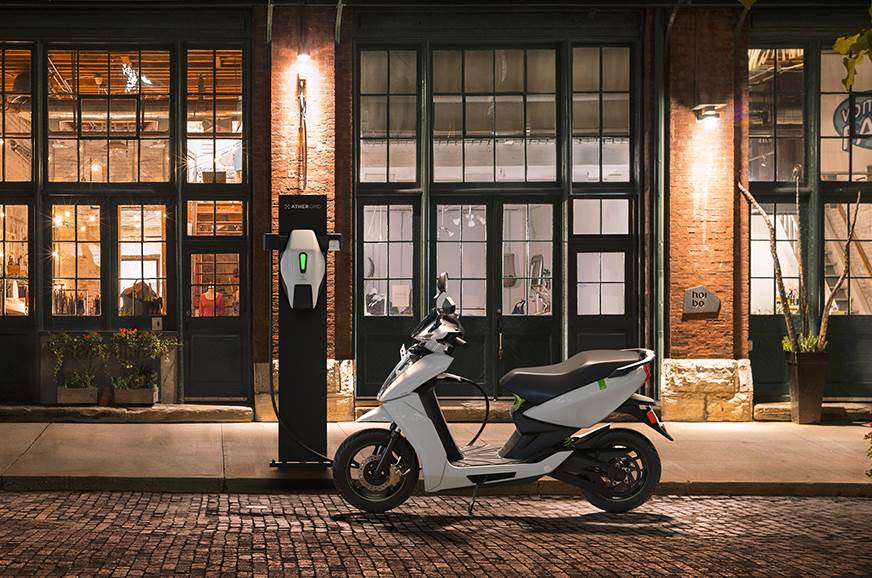
Last week Ola Electric — the electric vehicle arm of ride-hailing giant Ola — raised $100 million in debt from the Bank of Baroda. The money will be used towards closing the first phase of development of its 500-acre factory, which is expected to manufacture 10 million electric two-wheelers a year at full capacity and 15% of the world’s e-scooters by 2022.
Other two-wheeler manufacturers have made important announcements regarding their move into the electric segment. Harley-Davidson earlier this month introduced the first e-motorcycle under its new LiveWire brand. The company is entering the EV arena in the face of competition from several e-motorcycle startups that are attempting to convert gas riders to electric. One of the leaders is California-based startup Zero Motorcycles, which has 200 dealers worldwide. Meanwhile, Lime added a new member to its electric vehicle family in January: e-mopeds. Currently being piloted in Paris and Washington DC, these mopeds are manufactured by NIU, a Chinese company that also supplies mopeds to New York City-based mobility company Revel.
Before we proceed with our analysis, a note on terminology. Some people refer to e-mopeds as e-scooters or vice versa. For others, the term e-moped is used interchangeably with e-motorcycle. For clarity, at Aster Fab, we define e-motorcycles as electric vehicles with an engine size greater than 150cc, e-mopeds with an engine size smaller than 150cc. E-scooters have a floorboard that one can stand on and do not exceed a speed of 15mph.
As the electrification of the automotive industry advances, the electrification of two-wheelers is slowly following the same path, but with less enthusiasm. After the proliferation of e-scooters, the first e-mopeds and e-motorcycles are beginning to hit the market. While BMW has led the electrification efforts in the motorcycle market so far, the momentum for e-motorcycles is gradually building among major manufacturers. Relatively silent on the subject in recent years, Yamaha last month announced its commitment to achieving full lifecycle carbon neutrality for its products by 2050. The company sees itself selling 90% of electric motorbikes by 2050. Honda has also begun filing its first patents. E-motorcycles have less growth potential than e-mopeds, but this electrification revolution is driven by a combination of forces:
- Climate regulations and incentives — two-wheel EVs (E2Ws) and three-wheel EVs (E3Ws) are driven by government regulations and incentives to reduce carbon emissions. In China, internal combustion engine (ICE) engines were banned in 2011. More recently, e-motorcycles and e-mopeds will be exempt from paid parking as of January 2022 in Paris.
- Falling battery prices and lower total costs of ownership — over the next few years, the price of batteries is expected to drop from $200-$280 per kilowatt-hour to $90-$130. This is expected to decrease the cost of ownership and potentially propel demand.
- The emergence of innovative go-to-market models — battery-as-a-service is an example of an innovative model. By decoupling the battery from the sale of the vehicle, as well as greatly improving convenience through express refueling, this model reduces up-front acquisition costs.
- The desire for high-end connectivity — for some consumers, electric two-wheelers are more appealing than standard ICE vehicles because of their higher connectivity.
Despite government incentives, electric two-wheelers are facing the same barriers to adoption as the automotive market. Primary concerns are battery life, limited charging infrastructure and lack of models. For e-motorcycles, additional impediments include the range requirements of consumers (250 miles or more), lack of consumer acceptance (no sound, vibration or engine heat) and ultimately the lack of participation of major manufacturers. Thus, battery swapping will play a key role in accelerating electric two-wheeler adoption. Honda, Yamaha, KTM and Piaggio pushed further into this space in March by announcing their intention to create a swappable battery standard. Indeed, battery swap business models reduce or eliminate market barriers around extended charging times, range anxiety, high upfront costs and battery reliability because riders easily can carry and switch out batteries on the go. Quintessentially a two-wheeler country, India is an exception leading the way with its government incentives and its entrepreneurship (driven by Hero Electric, Ather Energy, Ampere, Okinawa and many more). Just like in China, Vietnam, Indonesia, Thailand, the Philippines, the high urban density rates and high percentages of households that own two-wheelers make these countries best suited for electric two-wheelers. In fact, more than 2 million electric rickshaws are currently running on Indian roads.
Globally the landscape is highly fragmented with many players competing intensely for market share. New entrants even dominate the market in some regions, preventing traditional OEMs from having the same market share as with ICE vehicles. At the same time, other players are tapping into the emerging opportunities associated with electric two-wheelers. Energy companies and utilities, such as Tata Power in India, are acquiring EV-charging infrastructure and capturing upstream value by expanding their offer to battery management systems. While Tier-1 suppliers are moving into new product segments such as electric power trains and retrofit kits. Thus electrification, along with vehicle automation and many other disruptions, is reshaping the traditional value pool.
In conclusion, it is undeniable that the two-wheeler market is gaining momentum worldwide (especially in emerging markets) and that well-established OEMs and startups are tapping into the opportunity to capture new value. Although adoption in the e-motorcycle segment is much lower than for e-mopeds, both markets are expected to grow in the near future, despite the widespread charging infrastructure required. Given the intimate link between electrification and autonomy, the unanswered question is whether it will be traditional OEMs or new entrants with strong software capabilities (such as Tesla in the automotive industry) that will lead the two-wheeler electrification revolution. For e-mopeds, pure players appear to be in a strong position given the low connectivity requirements, while the high battery requirements for e-motorcycles will likely force traditional OEMs to invest heavily in battery swapping technologies and join forces with software companies.
2 Key Figures
190 electric two-wheeler startups
registered by Traxcn
The electric two-wheel market is expected to reach $11.3bn by 2025
The global electric scooter, moped & motorcycle market was estimated at $5.8 billion in 2020 and is expected to reach $11.3 billion by 2025, at a CAGR of 14.2%
3 startups to draw inspiration from
This week, we identified three startups that we can draw inspiration from: Zero Motorcycles, Gogoro and Noil.
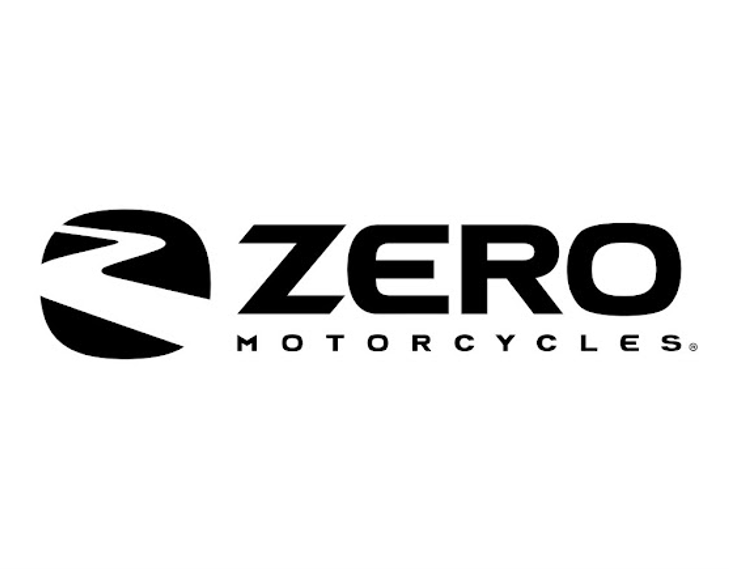
Zero Motorycles
Founded in 2006, Zero Motorcycles is a California-based manufacturer of electric motorcycles. Earlier this month, Zero Motorcycles launched its all new FXE model.

Gogoro
Founded in 2011, Gogoro is a Taiwan-based startup that developed a battery swapping refueling platform for urban electric two-wheel scooters, mopeds and motorcycles.

Noil
Founded in 2019, Noil is a France-based startup that retrofits thermal mopeds to electric in under 48 hours.
123Fab #51
1 topic, 2 key figures, 3 startups to draw inspiration from
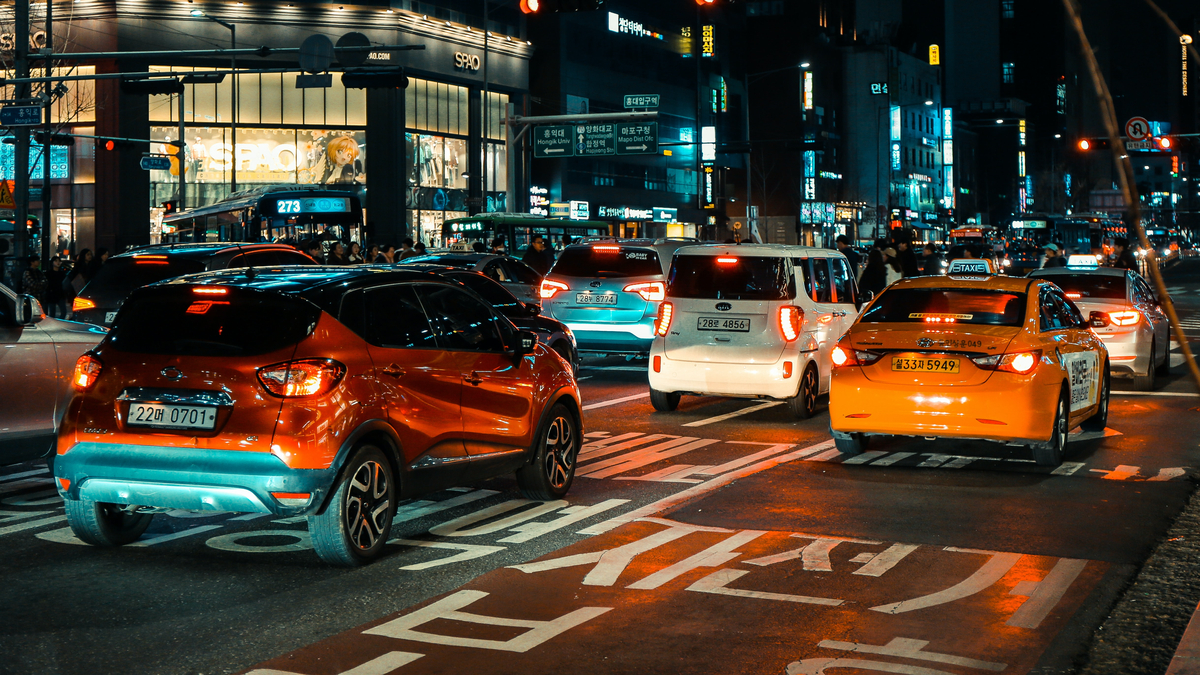
Behind the concept of the autonomous car lies 6 levels of automation ranging from 0 (classic car) to 5 (fully autonomous). Today, most commercially available vehicles are at most level 2: partial automation. At level 3, the vehicle can take full control of driving in certain situations (such as in traffic jams) — these vehicles are just coming to market.
Over the past decade, there has been much hope that automated cars would arrive in the near future, but now this prospect seems more remote, with the sale of Uber’s self-driving department 6 months ago not boding well for the industry in the short term. So what went wrong? What are the issues that the carmakers’ $120Bn investment over two years could not solve?
Part of the answer lies in the myriad of potential situations one may encounter while driving. Autonomous cars work well in controlled environments, but to achieve level 4 or 5 autonomy, i.e. letting go of the steering wheel for most of the journey, they need to be fully prepared for any situation (e.g. snow covering road markings, areas with no coverage, street lighting malfunctioning, jaywalking pedestrians, etc.). Thus, training artificial intelligence is essential for its public adoption, which is what OEMs, startups and Tier-1s are doing.
Training of algorithms for the multiplicity of situations
One step towards fully autonomous driving is to assess the safety of the AI driving model and highlight its blind spots to improve training on these cases. Startups such as Phantasma Labs have developed a virtual testing environment to assess the model’s behavior when confronted with Vulnerable Road Users (VRUs) such as pedestrians or cyclists. The model is faced with millions of situations involving machine learning-based VRUs in order to study the driving and address the mishandled situations. Other unexpected objects can disrupt driving. If traffic signs, stands, barriers, or excavators on the road seem straightforward to avoid for a human driver, it is more difficult for AI that has never encountered it before. Deep Safety offers annotated datasets dedicated to training models for the construction or road work industry. Its own trained AI identifies unknown objects encountered, raising an alert for the driver to take over. To evaluate the general safety of a model’s driving skills, Ivex proposes a safety assessment tool that provides KPIs on the safety of trajectories taken by the autonomous driving system, either in simulation or on real driving data, to spot potential improvements.
Drawing on as much data as possible
It seems unlikely that traditional cars will disappear in the near future and the behaviour of human drivers is harder to predict than that of driverless cars. Startups are also addressing the subject by connecting traditional and driverless cars. Valerann builds road sensors that gather information for autonomous vehicles about their in-lane location, even when the markings are not visible. They also connect classic cars to driverless vehicles by sharing their exact location and predicted trajectory, spotting abnormal driving behavior, and warning surrounding cars of danger. Eyenet offers collision prediction software based on GPS data from phones and AI that could be used to connect regular vehicles to autonomous ones and detect and prevent potential collisions. All this information is very valuable. The more accurate real-time data the model has, the easier it is to make the right decision.
React as quickly as possible
Training more complex models, fed by more information and capable of handling a wider range of situations, comes at a price. In the case of autonomous vehicles, every millisecond counts in the decision-making process, which puts great pressure on the data transmission process as well as on the computational power that can be installed in the car. Regarding data transmission, 5G and smart cities will have a great role to play, and the technology is on its way. When it comes to enhancing the car’s computational performance, edge computing seems to be the most promising answer. Unlike cloud computing, where calculations are performed on a remote server, far from the data, edge computing solutions offer calculations in microdata centers, relatively close to the car. This proximity tackles two problems: firstly, for autonomous cars, lag would have disastrous consequences and the lagging risk in communication is reduced when the data is sent to a closer location. Secondly, privacy is increased and the hacking risk is reduced as the data arrives in a smaller, more controlled environment than the cloud. Vapor.io provides microdata centers designed for edge computing that could be used for autonomous vehicles. Quadric.io is developing edge computing processors optimized for real-time calculation that will allow deeper models to be run. AlphaIcs has also developed its Real AI Processor (RAP), an edge computing solution designed for heavy AI applications like real-time automated driving. Together, these solutions address the trade-off between computing power and network latency for autonomous cars.
Startups appear to be leading the way in fully autonomous car innovation, thanks to massive funding from OEMs: Toyota and Aurora announced a partnership 4 months ago to produce mass autonomous vehicles for ride-hailing networks like Uber. Last year, Jaguar Land Rover partnered with Waymo to develop Waymo’s driverless fleet, and Volkswagen invested $1 billion in Argo’s self-driving technology and its Autonomous Intelligent Driving department became part of Argo.
It is difficult to assess when, or even if, autonomous vehicles will be the most represented on the road of the future, but applications are definitely emerging be it for ridesharing, trucking, or deliveries, market leaders are investing and technology is going forward.
2 Key Figures
129 self-driving car startups
registered by Tracxn
Global autonomous car market expected to reach $1,642 Bn by 2025
The global autonomous car market was estimated at $818.6 Bn in 2019 and is expected to reach $1,642 Bn by 2025, at a CAGR of 17.4%
3 startups to draw inspiration from
This week, we identified three startups that we can draw inspiration from: Phantasma Labs, Quadric.io and Eyenet.

Phantasma Labs
Founded in 2018, Phantasma Labs is a Berlin based startup that developed artificial intelligence-based massive simulations designed to improve self-driving automobiles. The company’s platform generates a substantial amount of data-sets related to real-life situations at scale for self-driving cars, models the behavior of pedestrians, cyclists and other road users in large-scale simulations in virtual scenarios, enabling autonomous vehicle makers to learn from real-life situations without the consequences of accidents.

Quadric.io
Based in California, Quadic.io developed an edge processor designed to meet the needs of next-generation autonomous products, Industrial IoT products, and robots. The company’s processors can be incorporated into a wide range of products that require instantaneous processing of real-world data streams with minimal power and maximum speed as well as commute safely, industrial robots to complete critical tasks and create human interaction with machines, enabling developers to empower with tools to create tomorrow’s technology today.

Eyenet
Created in 2018, Eyenet developed a collision prediction and prevention software-based platform designed to addresses safety challenges in the shared mobility landscape. The company’s platform incorporates AI-powered algorithms that calculates user location and collision probability as well as utilizes a sophisticated probability analysis for spatial cross-correlation of bearing, velocity and acceleration to determine an imminent collision.
123Fab #47
1 topic, 2 key figures, 3 startups to draw inspiration from
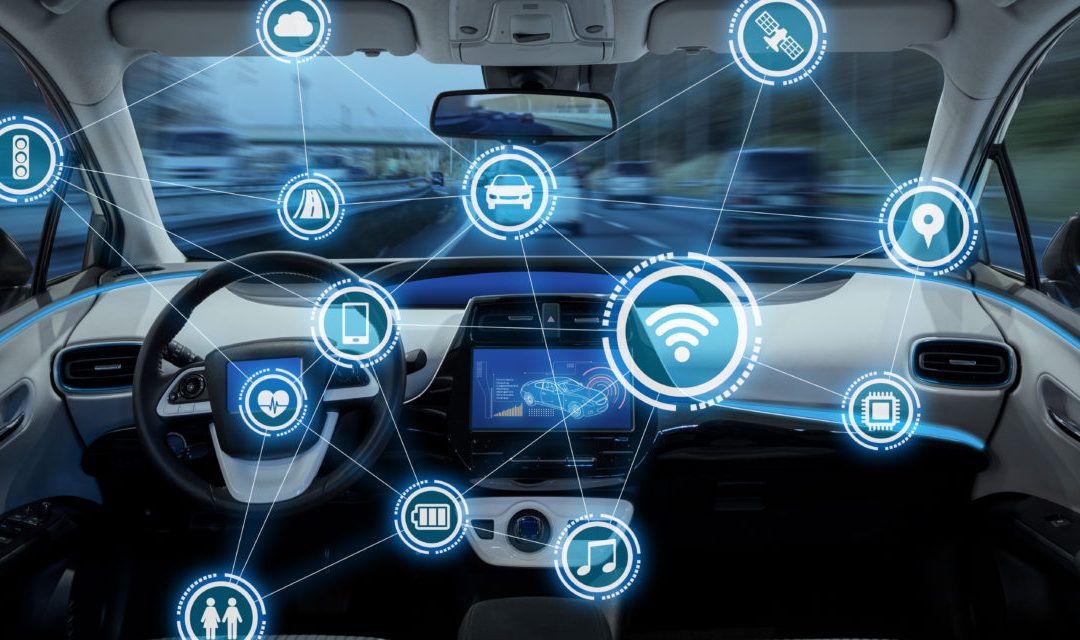
Connectivity is booming in the automotive industry. Today, the average high-end car uses seven times more code than a Boeing 747. With parking assistance, GPS, music applications, and more, OEMs (Original Equipment Manufacturers) and Tier-1 suppliers have rushed into the quest for connectivity. They have begun to integrate high-end electronics into privileged parts of the car, near the engine or infotainment systems, away from extreme outdoor conditions. As the value of data-driven services increases, even suppliers of initially “dumb” components – especially those that work at the junction between the outside world and the car (tires, windshields, bumpers…) – are exploring ways to connect their products. A series of solutions are being tested to resist commoditization, increase their service offering and better understand driving behavior.
Smart tires
Tires are one of the most battered parts of the car. They have to withstand high pressure, impact, a wide range of temperatures, road friction, etc. As a result, they are one of the most difficult automotive parts to equip with energy self-sufficient electronic systems. Although these stringent specifications have led to a delay in the adoption of connected tires, solutions are emerging to collect and use data. For instance, Revvo offers a remote tire management solution for fleet owners. Using sensors, they provide tire condition information in real-time. This information is analyzed via cloud computing to gain insight into behaviors that affect the life of the tire and estimate when it will need to be changed to avoid unexpected failure. Other startups, such as Tracsense, use car-mounted optical sensors to analyze the tire’s surface and feed the information into cloud-enabled machine learning models to assess road friction and infer on the next mile friction. This provides hyper-local information enabling precise road prediction forecasts.
Major corporates players have developed their own connected tires to keep up with the data race. In 2018, Michelin announced Track connect, a set of sensors designed for circuit racers that monitors tire pressure and temperature. A year later, Bridgestone announced its sensor technology for autonomous vehicles that estimates wheel axle load and tire wear condition. Also, in 2019, Pirelli developed a tire that interacts with the 5G network for V2X, feeding real-time road condition information and potential hazards such as aquaplaning.
Smart windows and windshields
Car windshields, roofs and windows are also likely to become connected. Gauzy already provides smart glass to car manufacturers, enabling dynamic light shading, temperature control, and transparent information display on them. Other companies offer Heads-Up Displays (HDU) on windshields: WayRay and Futurus provide immersive holographic augmented reality displays, projecting all sorts of information on the windshield, such as directions, potential danger zones, highlighting pedestrians and moving objects to avoid collisions. Last year Gauzy got funds from Hyundai to extend product reach and Futurus announced a partnership with BMW, while in 2018 Porsche and Hyundai invested in Round C financing of WayRay.
In the automotive glass industry, corporates are also trying to offer connected capabilities in their products to create differentiated offers. Major players like ACG glass propose the integration of antennas within the windshield to improve connectivity, as well as energy-efficient glass to reduce the need for AC. AGC glass has also developed a type of glass that does not interfere with LIDAR waves used by autonomous cars to detect their surroundings, allowing the LIDAR sensor to be inside the car, protected from the exterior.
In short, these technologies have attracted the interest of automotive OEMs and many of them will most likely develop high-end cars in the coming years. The main questions that remain are their adaptability to large-scale production, their energy consumption and the computational cost it requires. In any case, in tomorrow’s vehicle, whether it’s AI-assisted driving or fully autonomous, connectivity will be central and competition will be fierce.
2 Key Figures
514 connected car startups
registered by Tracxn
Connected cars market expected to reach $48.8 Bn by 2027
The connected cars market was estimated at $14.3 Bn in 2019 and is expected to reach $48.8Bn by 2027, at a CAGR of 26.3%
3 startups to draw inspiration from
This week, we identified three startups that we can draw inspiration from: Revvo, Tracsense and WayRay.

Revvo
Founded in 2018 in the US, Revvo developed smart sensors vehicle tires designed to monitor tires while a vehicle is on the road. The company’s tires include proprietary sensors and powered by artificial intelligence that is embedded inside the tire, which generate a real-time feed of a tire’s condition and performance which is sent to the cloud via an application on the driver’s phone, enabling drivers to predict tire health, thereby improving vehicle safety and performance.
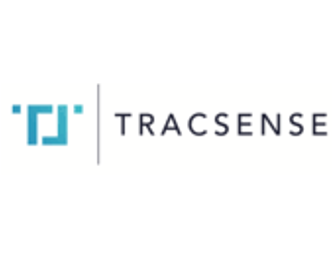
Tracsense
Tracsense developed an automotive technology intended to make slippery roads visible to self-driving cars. The company’s technology is supported by machine learning, cloud technology and an optical sensor solution that can determine the road friction with record accuracy, enabling customers to make autonomous driving possible in all weather conditions.

WayRay
Based in Zurich, WayRay developed of holographic augmented reality (AR) navigation systems designed to improve safety while driving a car. The company’s holographic AR navigation systems provide full-color heads-up displays in a car windshield and offers wide viewing angles while requiring less space for hardware and control systems, enabling car drivers to look through data in their windshields without looking down at gauges watching road conditions.
123Fab #38
1 topic, 2 key figures, 3 startups to draw inspiration from
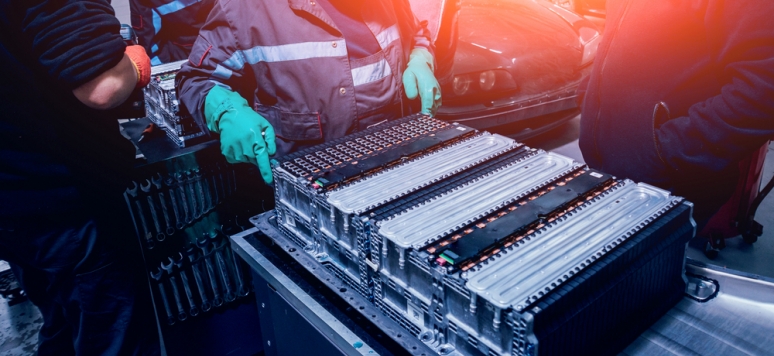
According to the International Energy Agency (IEA), the global fleet of electric vehicles (excluding two/three-wheelers) will reach 245 million vehicles in 2030 – more than 30 times the current level. But while the electric mobility revolution is underway, batteries present several challenges. EV batteries only last about 10 years and the main raw materials used in them are becoming increasingly scarce. In addition, the prices of raw metals are rising and volatile: the price of lithium in 2018 was 241% higher than in 2010, before falling in 2019. Thus, the two major consequences of this EV boom are the increase in demand for lithium, cobalt, and nickel (the key raw materials to produce battery cells) and the challenge of managing lithium-ion battery waste. Players like startup Redwood Materials, cofounded in 2017 by former Tesla CTO J.B. Straubel, are positioning themselves to address battery recycling issues. Indeed, in February 2021, Redwood Materials signed an agreement to recycle scrap and defective battery cells for Envision AESC, the Nissan car battery manufacturer in Smyrna, USA.
When an EV battery reaches the end of its first useful life, manufacturers can either dispose of it, reuse it, or recycle the valuable metals. To reuse batteries, several European automotive companies have already begun installing old EV batteries in multiple energy storage systems, ranging from small-scale residential systems to large-and grid-scale solutions. Nissan, for example, is the first carmaker to have received certification for second-life LEAF batteries to be used in stationary energy storage. Car retrofit – i.e. replacing a thermal engine with a recycled LIB or H2 battery to reduce its emissions (see our newsletter #28) – is also gaining ground. In 2019, Audi announced that it had begun testing second-life EV batteries for factory vehicles.
The other recycling solution is to separately recover the materials from the LIB to give them a second life. As resources are limited, LIB recycling seems to be essential for electric vehicles’ success. The economic benefits of battery recycling are very promising. Based on a recycling rate of 80% after 10 years of use, the profit from the battery recycling market could amount from €0.7 Bn to €1.4 Bn in 2030 (Roland Berger study).
Recycling processes generally involve a physical/mechanical separation followed by pyrolysis and/or a hydrometallurgical process.
- The pyrometallurgical process: nickel, cobalt, and copper are recovered through smelting. Despite the large energy inputs, the recovery rate of this process is low, around 30-40%.
- The hydrometallurgical process: the metal component and the recycled metal solutions are dissolved by leaching. The recovery rate of this process is higher and less-energy intensive, thus preferred by market players. For instance, the German startup Duesenfeld has built a recovery method that combines mechanical, thermodynamic, and hydrometallurgical processes. Compared to the pyrometallurgical process, their method saves 4.8 tonnes of CO2 per tonne of recycled batteries.
Both technologies are used by more and more players. Not only the traditional recycling players but also automotive companies and new startups.
Veolia has been recycling car batteries in France since 2013 and decided in September 2020 to join forces with Solvay to create a circular economy consortium to optimize the recycling of LIB for EVs and hybrids. Regarding automotive players, Audi and recycling player Umicore announced a battery recycling partnership in 2019. For this closed-loop pilot project, Umicore will recover cobalt and nickel from Audi’s e-trons (more than 90% of the cobalt and nickel in their batteries can be recycled) and process them into precursor and cathode materials to produce new batteries from recycled elements. Similarly, Singaporean startup Green Li-ion has a patented multi-cathode processor to recycle all types of Li-ion batteries into 99.9% pure cathodes. This is expected to speed up current recycling processes tenfold and increase profits fourfold.
As this recycling potential begins to be exploited by many players, legislators are supporting these trends through regulations and directives. The EU Commission, whose new Battery Directive is due to be transposed into national law by 2024, wants car and battery manufacturers to set up a comprehensive battery collection and recycling system. The stated aim is that about half the weight of lithium-ion batteries (LIB) should be recycled. In Canada, the Ontario government drafted regulations in May 2019, making the battery producer liable for the collection and management of their product to help create a circular economy. In China, the government has implemented a Battery Recycling and Traceability Management Platform in 2018, where all EV batteries are assigned a unique and traceable ID, facilitating the collection, sorting, and recycling of e-waste.
Although the regulation is being implemented, four major challenges remain:
- The inadequacy of the logistics of LIB collection channels. While this issue should gradually be resolved as recycling accelerates, the question of who will take on the role of logisticians (battery manufacturers, automotive brands, or recycling players, etc.) will remain uncertain if recycling remains centralized.
- The high upfront expenditure required to set up a large-scale LIB recycling plant. Economies of scale are likely to be seen within 5-6 years as recycling becomes more widespread and systematic.
- The requirement for a high LIB recycling efficiency rate, regardless of the LIB chemistry being recycled. The recycling rate is already around 80% and is expected to increase in the coming years, as some startups are developing prototypes capable of recycling more than 90% of the LIB.
- The recycling steps vary according to the different types of batteries (lead-acid, nickel-cadmium, zinc-air, alkaline, …). Thus, recycling facilities need to be adapted to several processes. Even among LIB batteries, the most used for EVs, the process differs according to their composition and recovery rate.
To conclude, lithium-ion batteries are likely to remain the major battery type for EVs in the coming decades (due to their high energy intensity relative to their weight, compared to other batteries such as lead-acid, nickel-cadmium, or zinc-air). There is a need to close the loop to meet the demand for their scarce and expensive raw materials.
2 Key Figures
51 battery recycling startups
registered by Traxcn
Market size expected to reach $12.2Bn by 2025
The size of the battery recycling market is expected to reach $12.2 Bn by 2025, compared to a market of $1.5 Bn in 2019.
3 startups to draw inspiration from
This week, we identified three startups that we can draw inspiration from: Li-Cycle, Green Li-ion and Lohum.
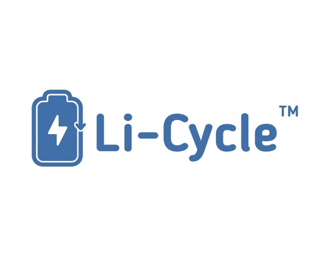
Li-Cycle
Li-Cycle is a Canadian startup that uses a combination of mechanical size reduction and hydro-metallurgical resource recovery techniques to recycle lithium-ion batteries. Their recycling technique does not generate any hazardous product which minimizes transportation liability and lowers costs.
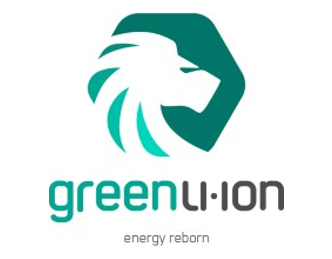
Green Li-ion
It is a Singapore-based start-up which recycles the metals of LIBs (cobalt, nickel, manganese and other expensive metals), recover them, and make them ready to be reused in new batteries. Their patented technology is cleaner, faster, and four times more profitable than current LIB recycling. It is also the only technology to fully rejuvenate the battery cathode

Lohum
Lohum is an Indian start-up manufacturing of Li-ion battery packs and recycling battery components. It provides full lifecycle solutions for manufacturers involved with low-power mobility and storage applications such as electric two-wheelers, rickshaws and inverters. It offers secondary life cycle solutions such as battery recycling to large manufacturers and companies using Li-ion batteries.
123Fab #35
1 topic, 2 key figures, 3 startups to draw inspiration from

In February, Estonian start-up Hepta Airborne raised €2 million to take its drone powerline inspection solution to the next level. Using LiDAR, thermal sensors and cameras, Hepta Airborne helps automatically detect powerline and power infrastructure defects. This fundraising embodies the current surge in the use of drones for difficult tasks in the industry. Indeed, the overall commercial drone market is projected to reach $43 billion by 2024, up from $587 million in 2016. The volume of VC investments has increased by 21% over the past 4 years, reaching $185 million in 2020. In the coming years, the market is expected to become more concentrated, with the leaders winning out over weaker players, as did the fast-growing start-up Airobotics, which raised a total of $123M in funding over 5 years.
Drones are used in a variety of industries, but above all in 4D situations: dirt, dull, distant, and dangerous. The main industries that use them are the energy sector (both oil & gas and renewables), precision agriculture, construction, and mining. Although regulations are often a hindrance, there are gradually being adapted to each industry and use case, in order to enable the effective use of drones.
The energy sector can greatly benefit from drone inspections, which not only help to reduce costs, but also to prevent disasters and save lives. Indeed, they allow distant and dangerous inspections to be carried out, eliminating the need for climbing wind turbines or reaching offshore oil platforms. Although standards for drone operations are yet under development, they could help expand the use of unmanned aircraft services in the energy industry and boost innovation. The main challenge, however, lies in flights beyond the visual line of sight (BVLOS) – to carry out pipeline and powerline inspections over long distances, for instance – as the detect-and-avoid technology is not sufficiently advanced. Improvements in advanced EO/IR [electro optical/infrared] sensors, acoustic sensors, machine learning, ground-based radar, and other technologies could change the game. Avitas Sytems, a General Electric venture, has developed a digital platform and drone inspection capabilities for pipelines, for instance. Wind turbine inspection can be monitored by drones, such as those of the start-up Aerialtronics.
Drone activity in agriculture continues to increase, and the aerial imagery generated can provide unique insights by scouting crops, reporting crop damage, or determining tile locations. Drone use is mainly justified by a more accurate collection of crop data and the avoidance of dull stains. Over the past ten years, the Federal Aviation Administration (FAA) has continued to review the requirements for the operation of small unmanned aerial systems to create a reasonable legal pathway for use in agriculture. This involves obtaining a remote pilot certificate, registering the drone with the FAA, but also weighing less than 55 pounds, maintaining a maximum altitude of 400 feet, and remaining within the visual line of sight of the remote pilot or visual observer in command. Although these regulations seem restrictive, they enable farmers to use them as part of their needs. The Swiss start-up Gamaya uses HSI (Hyperspectral Imaging) technology deployed using small unmanned aircraft systems for remote sensing and high-resolution imagery. It can be used to diagnose crop diseases, the proliferation of invasive species, and environmental stresses.
As for drones in the construction industry, they are mainly used for surveying and inspection purposes. They perform dull, dangerous, distant, and time-consuming tasks. Drones are equipped with downward-facing sensors, such as RGB, multispectral, thermal, or LIDAR, and capture a large amount of aerial data in a short time. According to a PwC study, the use of drones throughout a construction project provides an unparalleled record of all activities; cuts planning and survey costs; increases efficiency and accuracy and eliminates disputes over the status of a project at a given point in time. Drafted regulations in the construction industry frame the use of drones, without preventing it. Drones can only fly during daylight, must be close enough to the operators to be seen by the naked eye, and cannot exceed a certain altitude and speed. The Swiss start-up Wingtra, which has raised a total of $19M, provides mapping drones for construction sites.
Finally, drones in the mining industry help solve challenges such as better blast optimization, improved safety, faster surveying, and the construction of the most comprehensive and continuous project datasets. On mining sites, drones are used to cover distant areas where foot traffic is not allowed. Their aerial photography and remote sensing allow mining companies to capture all that information without putting someone at risk.
All these examples highlight the significant potential of drones in the industry. Apart from regulation issues, the main factors limiting the massive adoption of drones are technical issues (battery autonomy, drone fleet management, data transfer, etc.) and practical issues (lack of certified pilots, hence the creation of marketplaces for drone rides).
To conclude, the potential of the drone market is high and has not yet reached maturity, and private investors are betting on it. Harmonization of regulations is underway – for recreational drones, the EU announced a continent-wide standardization on January 1st; and technology innovations (battery life, collision avoidance, autopilot, data processing, control & communication systems) should follow to enable democratized use in the industry.
2 Key Figures
1,009 drone startups
registered by Tracxn
Market size expected to reach $43bn by 2024
The market size of commercial drones is expected to reach $43bn by 2024, a CAGR of over 20% from 2018
3 startups to draw inspiration from
This week, we identified three startups that we can draw inspiration from: Percepto, Asylon, and SkySpecs.

Percepto
Percepto is a developer of autonomous drone technology for inspection and surveillance. The company has developed solution to holistically inspect and monitor industrial sites, harnessing remote robotics to autonomously collect, aggregate, and analyze visual data. Percepto operates in mining, oil & gas, industrial sites, and solar energy production sites.
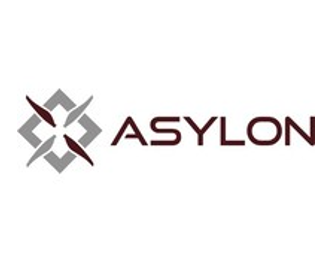
Asylon
Asylon manufactures and distributes a range of field deployable infrastructure to its clients. Among others, the company manufactures DroneHome, a field-deployable battery swap station. It offers data linking, coverage, mesh networking, and mixed fleet support. Asylon has chosen a robot-as-a-service model, where they provide an end-to-end solution for an annual subscription.

SkySpecs
SkySpecs is a provider of autonomous drone inspections for onshore and offshore wind turbines. The safety software services include the development of an automated drone inspection feature for applications in wind turbines, utility and other infrastructure operations and maintenance activities and provides an analytics platform that supports workflows at every level of the value chain.
123Fab #34
1 topic, 2 key figures, 3 startups to draw inspiration from
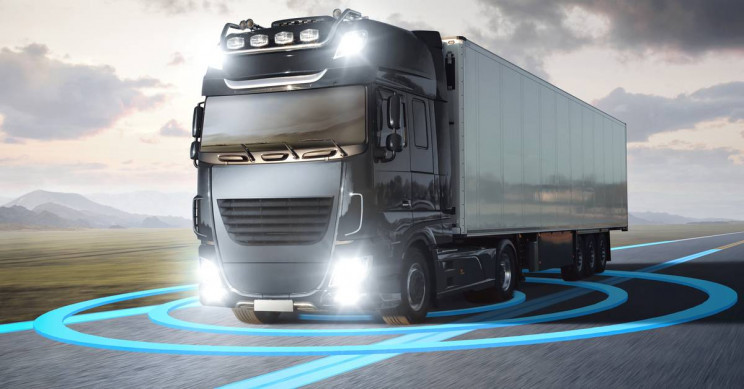
Breakthroughs in the field of autonomous vehicles, including for freight, have leaped forward in recent years. In October 2020, Swedish startup Einride unveiled a new driverless vehicle for autonomous freight, which the company hopes to see on the road this year. Last year, Plus.AI completed its first coast-to-coast commercial journey across the US with an autonomous truck, using simultaneous localization and mapping (SLAM) technologies. Indeed, a combination of factors has been fueling this development, including the increasing road freight (with 11,000 bn ton-km today, it is expected to double over the next 20 years) and the shortage of drivers (a lack of 175,000 drivers by 2024, according to the American Trucking Association).
In this respect, the European Commission launched in December 2020 a 29-partner consortium – All-Weather Autonomous Real Logistics Operations and Demonstrations (AWARD) – to shake up transport for the freight industry, and in particular, “operations in difficult weather conditions”. Led by EasyMile, this 3-year, €20 million project brings together truck manufacturers, equipment manufacturers, end-users and logistics operators.
While institutions are beginning to support autonomous freight, innovation and new technologies are the playground for startups and established automotive players. Innovations can be split into four main areas: sensors such as cameras or lidars (which provide data to a trained computer), computing hardware (responsible for autonomous driving calculations and decision making), storage infrastructure (to store data, on the edge and in the cloud, for future analysis and algorithm improvement) and autonomy software (which ultimately takes all the decision). If the range of technologies is similar to that of autonomous cars, long-distance trucks are better suited to test automated driving because of their extensive use of highways – where unexpected situations are less likely to occur than on urban roads – and the repetitiveness of their itineraries.
Startups at the wheel, which work on more or less autonomous trucks, include:
- US start-up TuSimple, a developer of autonomous driving technologies applied to trucks. It already has partnerships with two OEMs (Navistar and VW’s Traton truck OEM) and plans to reach Level 4 autonomy (trucks able to operate without a human driver under limited conditions that may include the time of day, weather, or pre-mapped routes).
- Otto, which was founded by former Google, Tesla, and Apple employees, is developing software to be installed on existing trucks to make them fully autonomous.
- Embark Trucks has already commercialized fully automated semi-trucks and trucks (used by Amazon for some loads).
Automotive and logistics players are also following the trend:
- Daimler Trucks signed a partnership with Waymo last October to deploy autonomous SAE L4 technology. They will combine Waymo’s cutting-edge automated driver technology with a unique version of Daimler’s Freightliner Cascadia, which will be commercialized in 2025.
- In 2016, a fleet of semi-autonomous Scania trucks (a Swedish manufacturer specializing in heavy vehicles) completed a journey from Sweden to the Netherlands using a technique called platooning, in which one driver pilots the leading vehicle while the rest follow along automatically (such as the one developed by Peleton Technology)
- Walmart announced last December that it would test driverless autonomous delivery trucks with startup Gatik from 2021. The trucks are equipped with sensors and autonomous driving software. To limit the risks, they have decided to start driving on the same and registered routes (mainly between warehouses and supermarkets).
The recent and on-going acceleration in autonomous freight vehicles is due to the many advantages they provide. 45% reduction in exploitation costs (McKinsey), better utilization (they operate 24/7 without driver rest periods), and a higher payload of trucks (as there is no driver cabin anymore). Moreover, it improves drivers’ conditions (avoiding night drives, more rest thanks to driving assistance). Finally, autonomous vehicles contribute to higher road safety (security systems should avoid 90% of crashes caused by human error) and a reduction of carbon footprint thanks to methods like platooning or IoT to optimize fuel consumption.
Nonetheless, several challenges or competitive alternatives remain. The impact on jobs is difficult to assess, due to the higher demand and need for monitoring of self-driving trucks. Autonomous fleets face autonomous trains which have higher productivity. One could see an opportunity for railway companies to integrate automated trucks. They could increase speed and throughput as well as secure a critical role in the overall ecosystem. Finally, as with autonomous cars, regulations need to be harmonized between countries, and the issue of liability is essential for further deployment.
To conclude, the market is growing fast and innovations are multiplying, which will likely lead to a technology transfer to other autonomous devices (cars, machines, robots, etc.). Institutions and key players, as Uber does, still need to work on driverless vehicle and regulation issues.
2 Key Figures
30 self-driving truck technology-provider startups
registered by Tracxn
Market size expected to reach $2.01bn by 2027
The market size of autonomous trucks is expected to reach $2.01bn by 2027, a CAGR of 12.6% from 2019
3 startups to draw inspiration from
This week, we identified three startups that we can draw inspiration from: Plus.ai, Kodiak Robotics, and Boxbot.

Plus.ai
Plus.ai develops self-driving technology for trucks. It offers solutions like the 360-degree perception that uses radars, LiDARs, and cameras for sensing. Their localization & mapping algorithms accurately track the location of trucks and detect and analyze road structures, and predict the behavior of other on-road vehicles.
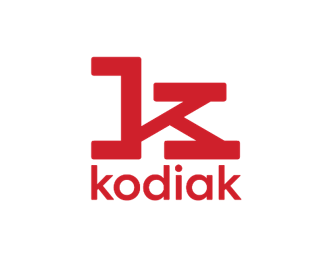
Kodiak
Kodiak Robotics is a developer of self-driving trucks. It develops autonomous trucks with a full-stack solution with simulation enhanced system to optimize the risk. Their fleet of self-driving trucks ahave been tested in California and are currently operating in Texas.

Boxbot
Boxbot is a developer of automation technology designed to address the last-mile issues in logistics, enabling businesses and individuals to optimize the experiences of suppliers and consumers.
123Fab #28
1 topic, 2 key figures, 3 startups to draw inspiration from
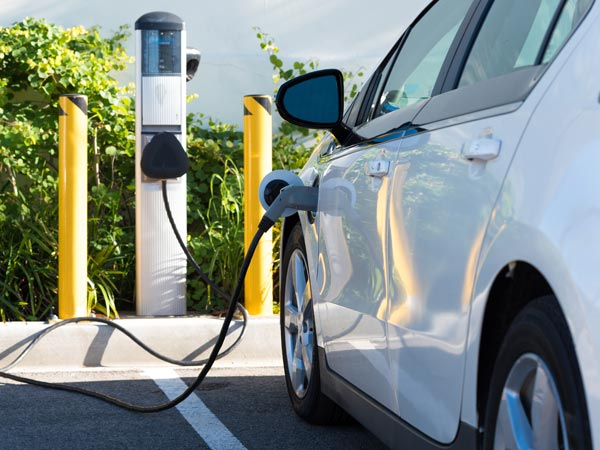
In April 2020, the French government finally authorized retrofitting, i.e. the conversion of a vehicle’s engine to reduce its emissions. Although retrofitting wasn’t illegal beforehand, it was necessary to obtain authorization from the car manufacturer for the retrofitted vehicle to be homologated. Today, any certified professional can convert a vehicle, as long as it is a passenger or freight transport vehicle more than 5 years old (cars, trucks, buses, light and heavy commercial vehicles, etc.) or a 2- or 3-wheeled vehicle more than 3 years old. While France is now the 13th European country to have legalized this practice for B2B and B2C players, it is also the first country to have authorized the retrofit of hydrogen engines. In this newsletter, we will focus on B2B retrofitting for cars and light commercial vehicles (LCV).
Two retrofit technologies coexist:
- Exhaust after-treatment systems (for diesel engines) – this process involves modifying only the diesel emission system of the engine. Hardware may include diesel particulate filters (DPFs), diesel oxidation catalysts (DOCs), selective catalytic reduction (SCR), crankcase emission control devices, or other technologies to reduce emissions.
- Re-power systems – this involves stripping out the existing engine and replacing it with a brand-new powertrain (e.g. a 100% electric powertrain, a cleaner diesel engine, a petrol engine + LPG system, or a hybrid electric powertrain). Hydrogen retrofitting involves removing the combustion engine and replacing it with a battery backed up by a hydrogen fuel cell. Although the technologies are very recent and many companies are still in the prototyping phase, the main reasons for the enthusiasm for hydrogen retrofit are the following:
- Battery recharging is faster: it takes about 5 minutes in a hydrogen charging station. However, the infrastructure is not yet well developed. In Europe, there are 170K electric charging stations compared to 87 hydrogen stations.
- Hydrogen batteries occupy smaller volumes compared to electric cars (but are heavier)
Since retrofitting presents an interesting opportunity for decarbonization, corporates are increasingly addressing this market. For instance, Air Liquid, Green GT and TC Transports are currently working on a project called ‘Cathyopé’ to retrofit 44-ton diesel trucks for commercial logistics. Corporate-startups are also flourishing. Last summer, Air France announced that it was joining forces with French startup Carwatt to switch to electric ramp equipment. Baggage trolleys, runway trucks, stepladders, aircraft pushers, etc. are being converted to electric engines and equipped with second-life batteries. Another example is the German startup Keyou, founded by former BMW engineers in 2015, which has redesigned the traditional internal combustion engine enabling it to run on hydrogen.
Beyond being an interesting decarbonization option, retrofitting has other advantages for manufacturers and end customers.
- Retrofitted vehicles are more affordable than new electric and hydrogen cars – for a fraction of the price of a new electric car (the cheapest $22,000), French start-up Transition One retrofits the most popular car models. For $5,600 (or $9,000 without a government subsidy), it builds a more efficient electric engine, batteries and a connected dashboard into the car.
- Retrofitted cars are eligible for subsidies – in France, for B2B retrofitting, companies can receive a subsidy of €4,000 for a commercial vehicle weighing less than 2.5 tons and €6,000 in other cases.
- Retrofitting contributes to a dual circular approach – on the one hand, it extends the life of existing thermic vehicles. On the other hand, old batteries are recycled and have a second life. The flagship example is the Renault Zoé, whose electric engine is reused in LCV or motorboats on the Seine, after 5 or 6 years of use when its capacity is only slightly degraded (70%-80% of its initial capacity).
However, a number of challenges also hinder the massive implementation of retrofitting. First of all, there are economic reasons for its slow adoption. The process is costly, especially if the car’s lifespan is limited by other components. Then, there are technical reasons. Retrofitted cars have a reduced driving range (120 to 200 km maximum) and must pass rigorous safety tests to be roadworthy. For hydrogen retrofitting, access to hydrogen is difficult; the number of charging stations is very limited. Finally, there is some hesitation about the environmental issues surrounding retrofitting – some wonder about the sustainability of EVs and therefore retrofitting. For others, it should be seen as a step in the transition to electric cars that only makes sense in certain circumstances.
To conclude, if retrofitting is a valid option for many companies at the moment, the future of the market will depend on its long-term affordability compared to other options. This is because the cars used are often end-of-life vehicles that can be more expensive to maintain. At the same time, the question of retrofitting electric vehicles is also beginning to be raised by car manufacturers.
2 Key Figures
24 vehicle retrofit startups
registered by Crunchbase
Market size expected to reach 420k vehicles by 2025
According to a study carried out by Aster Fab, the number of retrofitted vehicles in the EU is expected to reach 420,000 vehicles by 2025.
3 startups to draw inspiration from
This week, we identified three startups that we can draw inspiration from: Carwatt, Phoenix mobility and E-Néo.
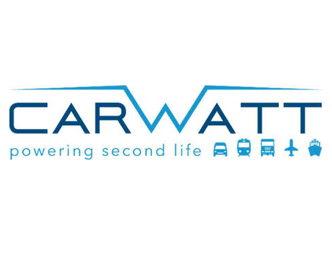
Carwatt
Carwatt converts industrial and transport vehicles from combustion to electric. It works on airport support equipment, industrial vehicles, waterways, safari cars.
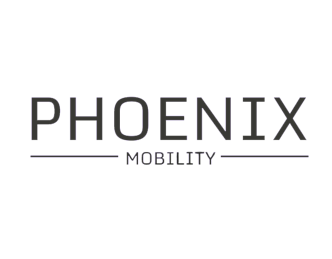
Phoenix Mobility
Phoenix Mobility designs retrofit kits to convert fuel-powered vehicles into electric ones. This is a cheaper and greener alternative to buying a new vehicle. It is one of the pioneers in retrofitting in France.

e-Néo
e-Néo works exclusively for B2B clients (garages, transporters, companies, local authorities, etc.) on the transformation of the vehicle’s powertrain (retrofit) from thermal to electric or hydrogen.
